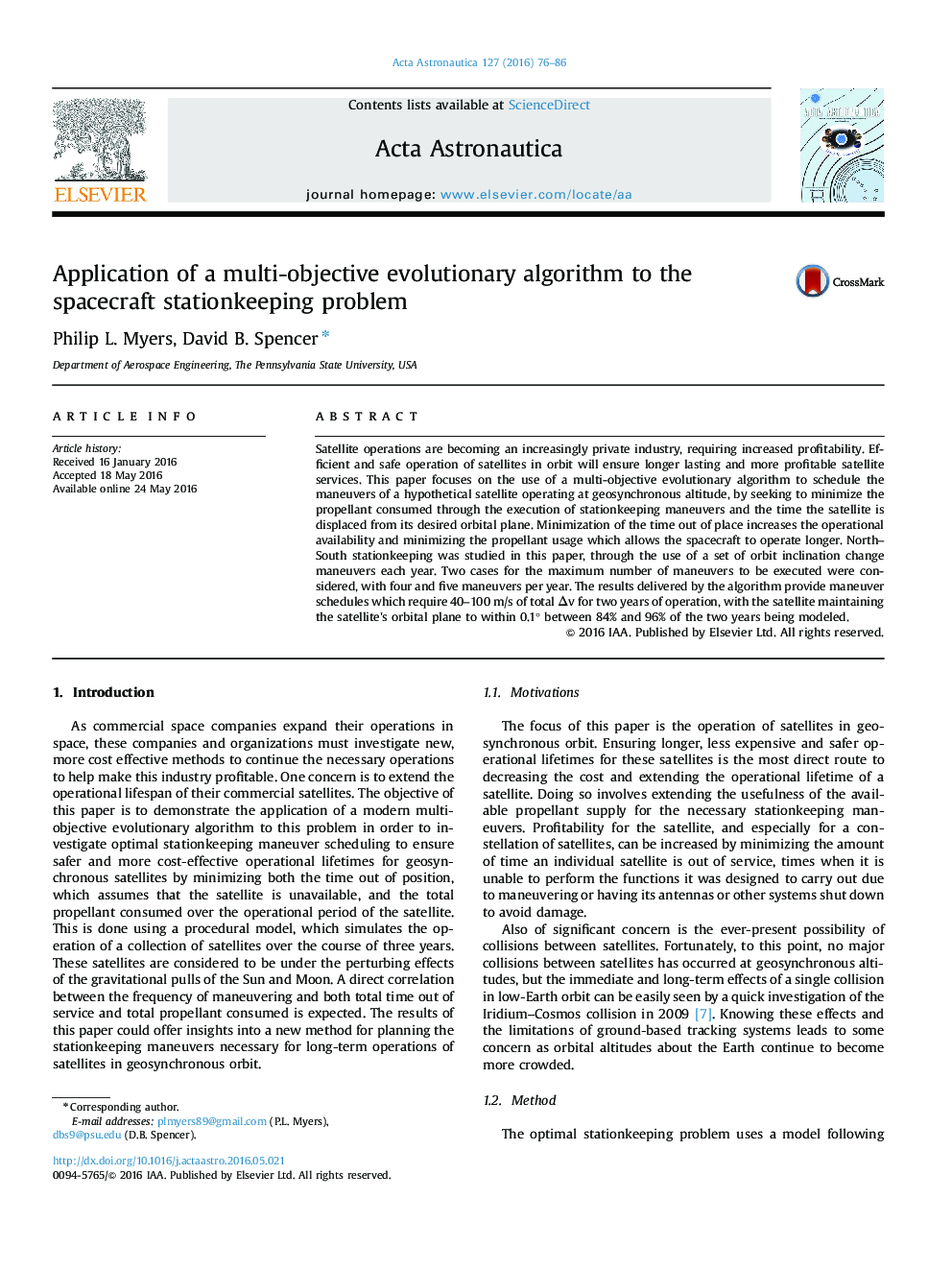| Article ID | Journal | Published Year | Pages | File Type |
|---|---|---|---|---|
| 8055999 | Acta Astronautica | 2016 | 11 Pages |
Abstract
Satellite operations are becoming an increasingly private industry, requiring increased profitability. Efficient and safe operation of satellites in orbit will ensure longer lasting and more profitable satellite services. This paper focuses on the use of a multi-objective evolutionary algorithm to schedule the maneuvers of a hypothetical satellite operating at geosynchronous altitude, by seeking to minimize the propellant consumed through the execution of stationkeeping maneuvers and the time the satellite is displaced from its desired orbital plane. Minimization of the time out of place increases the operational availability and minimizing the propellant usage which allows the spacecraft to operate longer. North-South stationkeeping was studied in this paper, through the use of a set of orbit inclination change maneuvers each year. Two cases for the maximum number of maneuvers to be executed were considered, with four and five maneuvers per year. The results delivered by the algorithm provide maneuver schedules which require 40-100 m/s of total Îv for two years of operation, with the satellite maintaining the satellite's orbital plane to within 0.1° between 84% and 96% of the two years being modeled.
Related Topics
Physical Sciences and Engineering
Engineering
Aerospace Engineering
Authors
Philip L. Myers, David B. Spencer,
